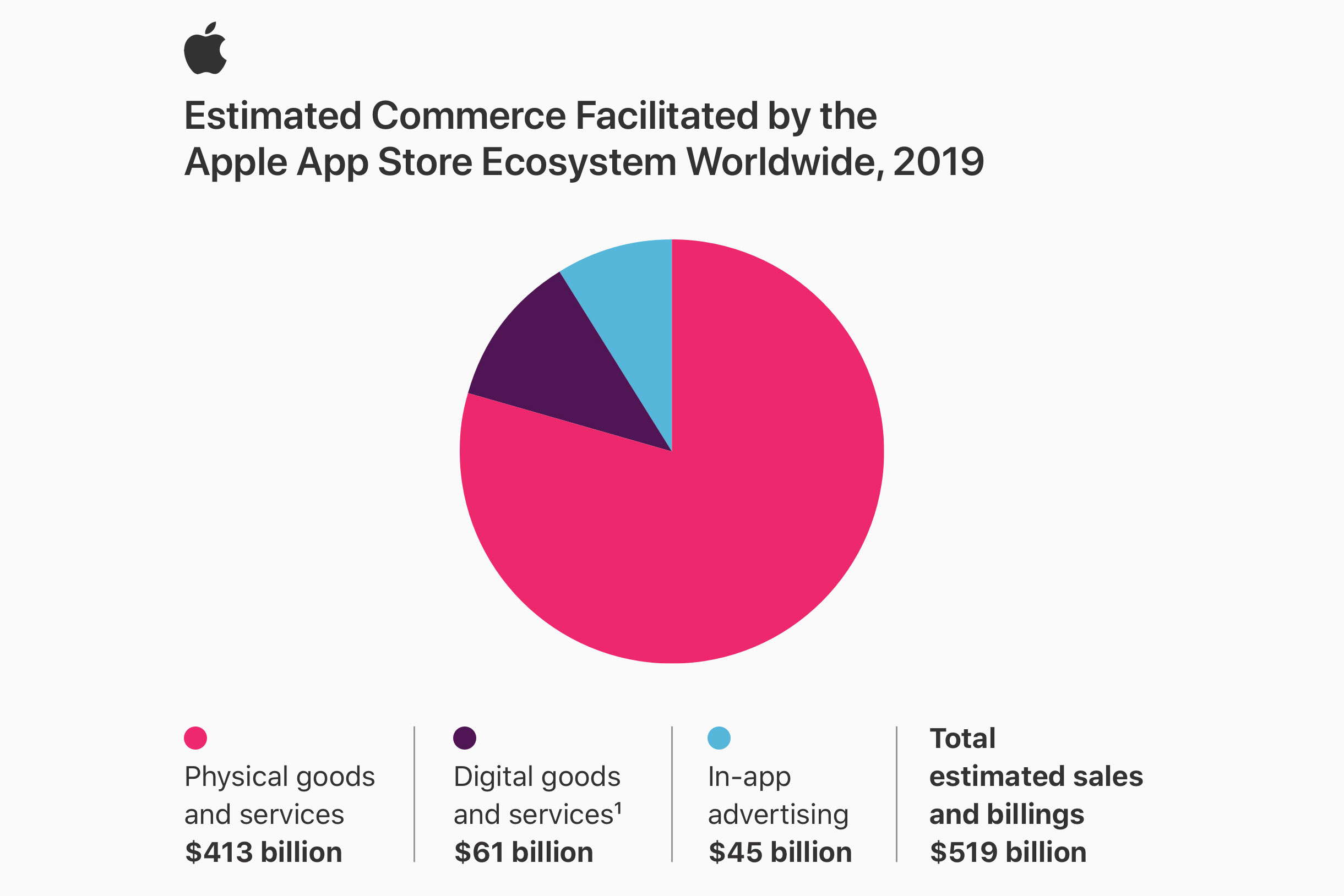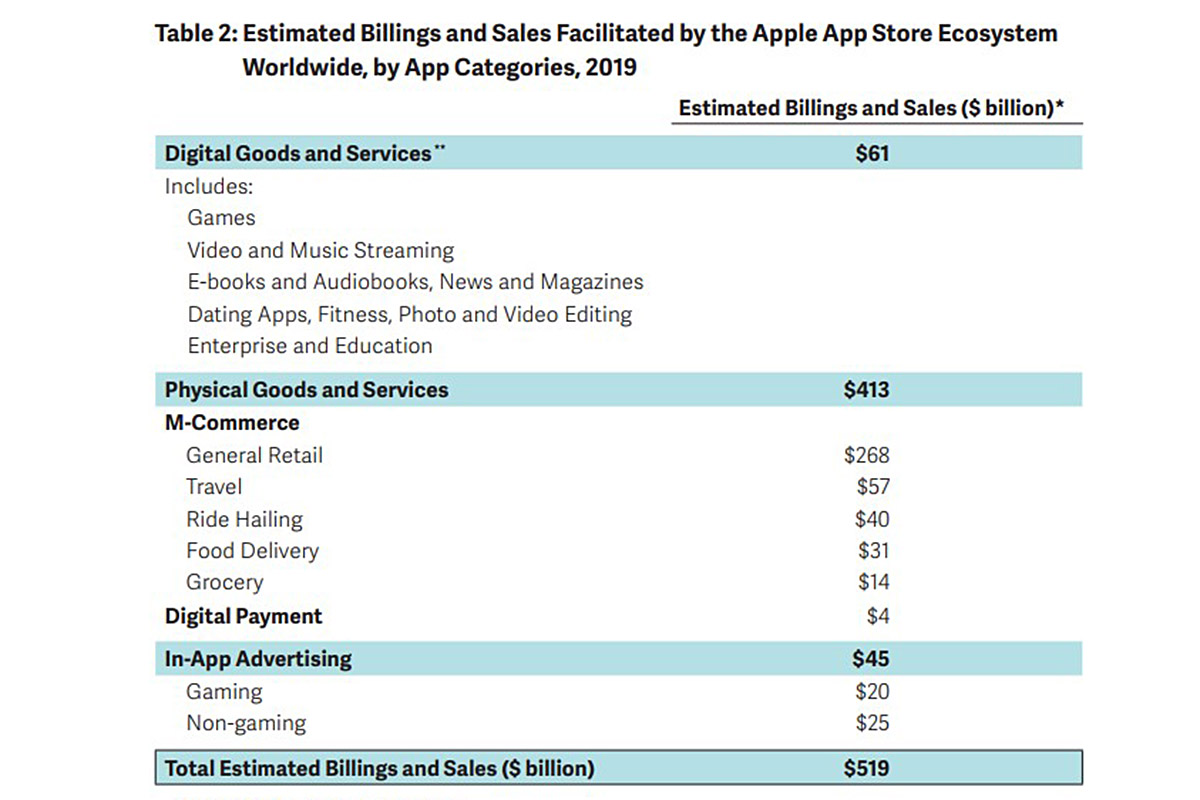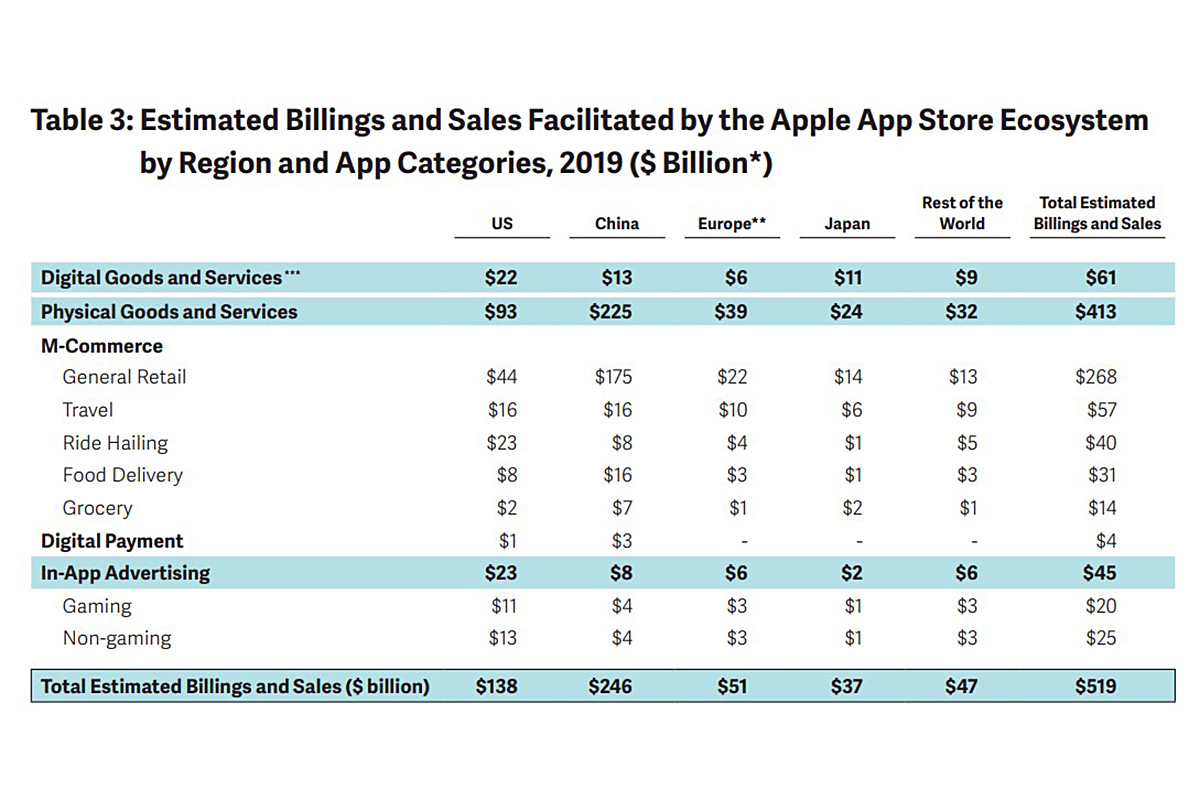A new independent study by economic consulting firm Analysis Group, found the App Store ecosystem helped facilitate USD 519 billion in estimated billings and sales worldwide last year.

The announcement comes a week before Apple’s annual developer conference, WWDC, when it is slated to reveal the latest version of its operating systems. The numbers seem to project that the App Store is a sprawling economy, making Apple’s case to developers that they stand to make big money on its platform.
It should be noted that the total figure in the study does not mean that the App Store generated USD 519 billion in transactions. This is because the study also counts payments for items like subscriptions and services that are purchased elsewhere but are used on an iOS device.
Out of the estimated total of USD 519 billion, the biggest sum came from the sale of physical goods and services which contributed USD 413 billion (80% of the total). This was followed by USD 61 billion from digital goods and services (12% of the total) while USD 45 billion from in-app advertising brought up the rear (9% of the total).
For the full breakdown of the total estimated billings and sales for certain categories see the table below.

Under the physical goods and services category, the biggest revenue generator was m-commerce apps which generated USD 268 billion. This was largely driven by retail apps from brick-and-mortar stores as well as virtual marketplaces.
There were also other types of m-commerce apps like travel apps that accounted for USD 57 billion, ride-hailing apps which comprised USD 40 billion in sales and food delivery apps which made up USD 31 billion.
Digital items made contributed the second highest to the total sum. Apple is said to take a 15 – 30% cut from this segment. The category includes mobile games, in-app purchases, some subscriptions and paid apps.
One interesting finding of the study comes from the geographic breakdown of spending by country. It finds that China is the largest contributor in billing and sales on the App Store ecosystem with a total of USD 246 billion (47% of the total USD 519 billion) while the United States accounted for USD 138 billion (27%). This was followed by Europe, Japan and the rest of the world.

It is worth noting that China led that category of physical goods and services with USD 225 billion spent (which is 54% of the total worldwide for the category). The study attributes this to China’s large and advanced mobile commerce market, with many users relying on apps to make purchases.
The study found that digital payment apps are increasingly popular worldwide. China remains the largest market for digital payments with Alipay and WeChat Pay widely used for online and offline sales. The two QR-code-based payment apps charge merchants a fee on purchases paid for with their apps.
Covid-19 leaves lasting effects on app ecosystem

The study also found that the Covid-19 pandemic has impacted the mobile economy and app ecosystem. This has resulted in more consumers using apps to make purchases while staying connected and entertained. During this time, app downloads, usage, billings and sales have seen a surge.
With more users working and studying from home there was an increase in the use of educational and business collaboration apps. Thanks to stay-at-home orders, there was also a massive growth in demand for food and grocery delivery. People have also been using health and fitness apps to stay active at home.
It noted that not all apps saw increased usage. Most notably travel apps such as those for booking airlines, hotels and restaurants saw drops. Ride-hailing apps also were negatively impacted. Spending on digital advertising also sharply fell as the pandemic rocked the economy.
The study concludes that many trends observed in early 2020 such as the increased use remote work and learning apps as well as the growing popularity of mobile commerce are here to stay.
[SOURCE]








